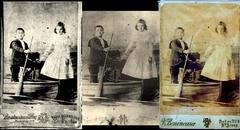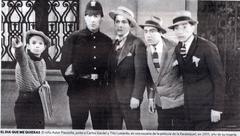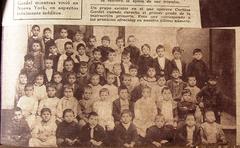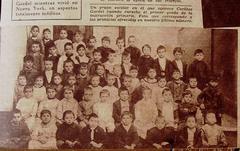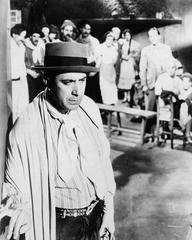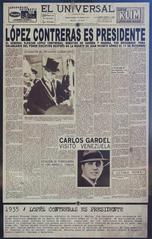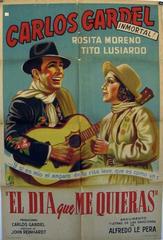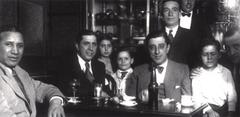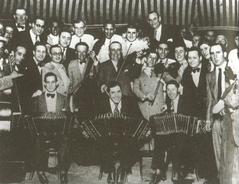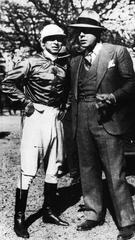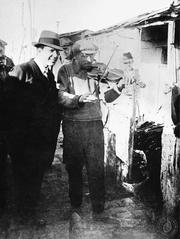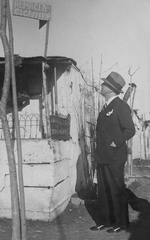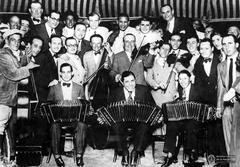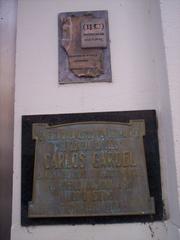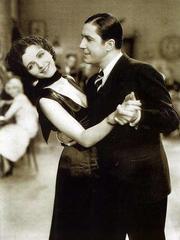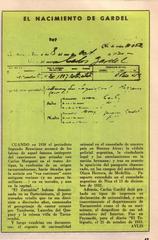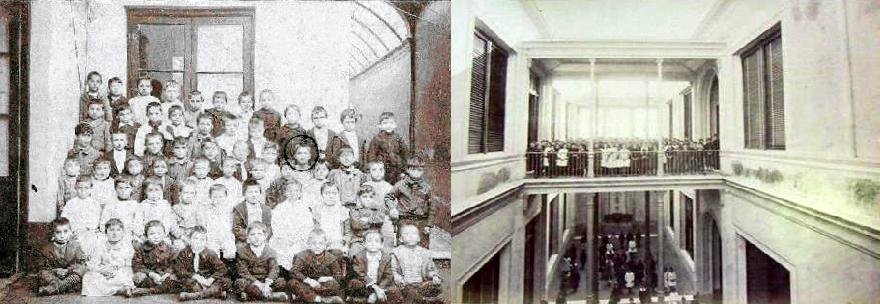
Visiting Carlos Gardel Sites in Buenos Aires, Argentina: Complete Guide
Date: 14/06/2025
Introduction: Discovering Gardel’s Buenos Aires
Carlos Gardel, revered as the King of Tango, remains a defining figure in the cultural and musical identity of Buenos Aires and Argentina. His journey from humble beginnings as Charles Romuald Gardès in Toulouse, France, to international stardom in Argentina, mirrors the story of tango itself: a blend of immigrant roots, working-class resilience, and global artistic triumph. For travelers and tango aficionados, following Gardel’s footsteps through Buenos Aires offers a unique immersion into the city’s history, music, and living heritage (Wikipedia, New York Latin Culture Magazine).
Central to this exploration is the Museo Casa Carlos Gardel in the historic Abasto neighborhood, where visitors can delve into Gardel’s personal life, artistic achievements, and the vibrant milieu that nurtured his talent. Beyond the museum, Gardel’s legacy is woven into the fabric of Buenos Aires: from murals and statues in Balvanera and Abasto, to the Carlos Gardel metro station, and iconic venues like Café Tortoni (Turismo Buenos Aires, Buenos Aires Free Walks, buenosaires.gob.ar, The Crazy Tourist). The city’s cultural calendar is punctuated by film screenings, live tango, and thematic guided tours, especially during Semana Gardeliana, celebrating Gardel’s enduring influence (infobae.com).
Whether you are planning a dedicated pilgrimage during Gardel Week or a casual exploration of tango’s roots, this detailed guide provides everything you need for an enriching experience: practical information on visiting hours, tickets, accessibility, travel tips, must-visit sites, and insider recommendations (Audiala).
Contents
- Gardel’s Life and Legacy: Historical Overview
- Museo Casa Carlos Gardel: Visit Guide
- Other Gardel Highlights: Cafés, Murals, Venues
- Practical Travel Information
- Frequently Asked Questions (FAQs)
- Conclusion: Embracing the Spirit of Tango
Gardel’s Life and Legacy: Historical Overview
Early Life and Rise to Fame
Carlos Gardel (born Charles Romuald Gardès, 1890, Toulouse) is celebrated as the most influential figure in tango history (Wikipedia). He moved to Buenos Aires as a child, where the city’s working-class immigrant neighborhoods profoundly shaped his identity (New York Latin Culture Magazine). By the 1910s, Gardel was performing in local bars and cafés, captivating audiences with his rich baritone. His 1917 hit “Mi Noche Triste” revolutionized tango by introducing vocals to a previously instrumental genre (Smithsonian). Over his career, he recorded nearly 900 songs and starred in films that brought tango to international recognition.
Abasto and the House on Jean Jaurés
In 1927, Gardel purchased a house at 735 Jean Jaurés in the Abasto neighborhood for his mother, Berta. This residence, now the Museo Casa Carlos Gardel, became a family sanctuary and a symbol of his deep connection to the barrio (Turismo Buenos Aires). Abasto’s vibrant immigrant culture and bustling nightlife provided a backdrop for Gardel’s artistic rise and remain integral to Buenos Aires’ tango identity (Introducing Buenos Aires).
Legacy and Impact
Gardel’s fusion of European opera, Argentine folk, and Afro-Argentine rhythms created a timeless sound that elevated tango from the city’s margins to the global stage (Vamos Spanish). His tragic death in a plane crash in 1935 at age 44 only deepened his legend, with annual tributes on his birthday (December 11, International Tango Day) and National Singer’s Day (June 24) (New York Latin Culture Magazine).
Museo Casa Carlos Gardel: Visit Guide
Location & Getting There
- Address: Jean Jaurés 735, Abasto, Buenos Aires
- Subway: Line B, Carlos Gardel station (a short walk from the museum)
- Bus & Taxi: Multiple city buses serve the area; taxis and ride-shares are convenient (aboutbuenosaires.org)
Visiting Hours (as of June 2025)
- Monday, Wednesday, Thursday, Friday: 11:00–19:00
- Saturday, Sunday, Public Holidays: 11:00–20:00
- Closed: Tuesdays, and major holidays (buenosaires.gob.ar)
Tickets & Admission
- General Admission: ARS $10,000
- Residents with DNI: ARS $2,000
- Free Admission: Wednesdays; for retirees, university students with ID, children under 12, people with disabilities (+ companion), Malvinas veterans, and public school groups
- Special Days: Free entry on June 24–25 (Gardel Week)
- Tickets: Available at the entrance; group or guided tour reservations recommended in advance (buenosaires.gob.ar)
Exhibits & Experience
- Permanent Collection: Explore Gardel’s personal artifacts, original recordings, costumes, film posters, and restored living spaces.
- Special Exhibitions: Rotating shows on tango history, music, and art.
- Events: Live tango performances, film screenings, dance classes, and lectures, especially during Semana Gardeliana (buenosaires.gob.ar).
- Guided Tours: Offered in Spanish, English, and French (check scheduled times).
Accessibility & Facilities
- Fully wheelchair accessible, with ramps and elevators.
- Bilingual signage; staff speak Spanish and some English.
- On-site restrooms and gift shop; nearby cafés and restaurants in Abasto.
Other Gardel Highlights: Cafés, Murals, Venues
Gardel Murals & Street Art
The Balvanera and Abasto neighborhoods are adorned with vibrant murals depicting Gardel’s iconic image — especially along Jean Jaurés and surrounding streets. These serve as both artistic tributes and popular photo spots (backpackingbella.com). A self-guided walking tour is easy and rewarding.
Carlos Gardel Subway Station
Located on Line B, this metro station is a unique homage with tango-themed tiles, murals, and a life-sized bronze statue of Gardel (turismo.buenosaires.gob.ar). Tango music often plays over the loudspeakers, adding to the atmosphere.
Café Tortoni
One of the city’s oldest cafés, Café Tortoni (Av. de Mayo 825) was a frequent haunt of Gardel and other cultural icons. The café hosts regular tango shows and displays memorabilia from Gardel’s era (turismo.buenosaires.gob.ar, The Crazy Tourist).
El Ateneo Grand Splendid
A stunning former theater-turned-bookstore (Av. Santa Fe 1860, Recoleta), El Ateneo Grand Splendid hosted Gardel performances in its heyday. Today, it’s one of the world’s most beautiful bookstores and an atmospheric stop for tango and culture fans (audiala.com, turismo.buenosaires.gob.ar).
Teatro San Martín: Film Tributes
During June, Teatro San Martín screens restored versions of Gardel’s films, such as “El día que me quieras.” These cinematic homages are especially popular during Gardel Week (infobae.com).
Practical Travel Information
Transportation
- Subway (Subte): Fastest way to reach Abasto/Balvanera; Carlos Gardel station (Line B) is central to most sites.
- Bus: Multiple lines serve the area; use local transit apps or maps.
- Taxi/Ride-share: Widely available and affordable.
Safety
- The Abasto and Balvanera neighborhoods are generally safe during the day; use standard precautions and avoid deserted areas at night (shortgirlontour.com).
Payments & Currency
- Bring Argentine pesos or crisp USD/EUR for best exchange rates.
- Museums and most venues accept cash and credit cards.
Accessibility & Language
- Most major sites are wheelchair accessible.
- Guided tours in English available at Museo Casa Carlos Gardel.
- Spanish is the local language; basic English is understood in tourist areas.
Additional Tips
- Best Visit Times: Weekday mornings and Wednesdays for free admission.
- Reservations: Recommended for tango shows and Café Tortoni.
- Photography: Allowed in most sites; flash/tripods may be restricted.
Frequently Asked Questions (FAQs)
Q: What are the visiting hours at Museo Casa Carlos Gardel?
A: Monday, Wednesday, Thursday, Friday 11:00–19:00; Saturday, Sunday, public holidays 11:00–20:00; closed Tuesdays.
Q: How can I purchase tickets?
A: Buy at the museum entrance; advance booking for groups/guided tours via phone or email is recommended.
Q: Are guided tours in English available?
A: Yes, scheduled in English, Spanish, and French.
Q: Is the museum accessible for visitors with disabilities?
A: Yes, fully accessible, free for visitors with disabilities and a companion.
Q: Can I take photos?
A: Yes, but avoid flash or tripods in certain venues.
Q: When is the best time to visit?
A: Weekdays and during special events like Gardel Week (June 24) or International Tango Day (December 11).
Conclusion: Embracing the Spirit of Tango
Exploring Carlos Gardel’s Buenos Aires is more than a sightseeing tour — it’s an invitation to experience the city’s living history and the enduring magic of tango. From the evocative Museo Casa Carlos Gardel to the murals, cafés, and theaters that shape the city’s cultural landscape, Gardel’s legacy continues to inspire and unite locals and visitors alike. Plan your visit around key dates, join a guided tour, and immerse yourself in the rhythms and stories that define Argentina’s soul.
For the latest updates, insider tips, and guided audio content, download the Audiala app and follow Buenos Aires’ official cultural channels.
Sources and Further Reading
- Wikipedia
- New York Latin Culture Magazine
- Turismo Buenos Aires
- Buenos Aires Free Walks
- buenosaires.gob.ar
- infobae.com
- The Crazy Tourist
- Moments Log
- Audiala


